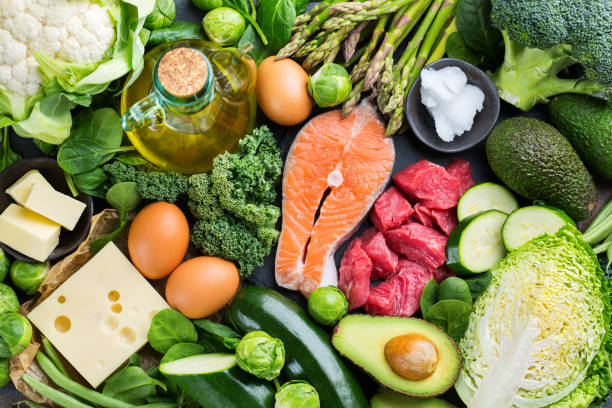Unit 12. Food and Nutrition Issues
12.2 Comparing Foods and Diets
Food and Diet Trends and Health
 In the past, health was regarded merely as the absence of illness. However, a growing understanding of the complexity and potential of the human condition has prompted a new way of thinking about health. Today, we focus on the idea of wellness, which involves a great deal more than just not being sick. Wellness is a state of optimal well-being that enables an individual to maximize their potential. This concept includes a host of dimensions—physical, mental, emotional, social, environmental, and spiritual—which affect one’s quality of life.[1] Striving for wellness begins with an examination of dietary choices.
In the past, health was regarded merely as the absence of illness. However, a growing understanding of the complexity and potential of the human condition has prompted a new way of thinking about health. Today, we focus on the idea of wellness, which involves a great deal more than just not being sick. Wellness is a state of optimal well-being that enables an individual to maximize their potential. This concept includes a host of dimensions—physical, mental, emotional, social, environmental, and spiritual—which affect one’s quality of life.[1] Striving for wellness begins with an examination of dietary choices.
Food Trends
Hundreds of years ago, when food was less accessible and daily life required much more physical activity, people worried less about obesity and more about simply getting enough to eat. In today’s industrialized nations, conveniences have solved some problems and introduced new ones, including the hand-in-hand obesity and diabetes epidemics. Fad diets gained popularity as more North Americans struggled with excess pounds. However, new evidence-based approaches that emphasize more holistic measures are on the rise. These new dietary trends encourage those seeking to lose weight to eat healthy, whole foods first, while adopting a more active lifestyle. These sound practices put dietary choices in the context of wellness and a healthier approach to life.
Everyday Connections
In the past, people’s culture and location determined the foods they ate and the manner in which they prepared their meals. For example, in Hawai’i, taro was a staple complex carbohydrate that could be eaten in various ways such as poi and pa’ia’i. Today, most people have access to a wide variety of food and can prepare them any way they choose. However, customs and traditions still strongly influence diet and cuisine in most areas of the world. To learn more about the food and culture in the Pacific, visit http://manoa.hawaii.edu/ctahr/pacificfoodguide/index.php/regional-information/
Functional Foods
Many people try to eat foods that provide the greatest health benefits. This trend is giving rise to the idea of functional foods, which not only help meet basic nutritional needs but also are reported to fight illness and aging. According to the Academy of Nutrition and Dietetics (AND), formerly known as The American Dietetic Association, functional foods may reduce the risk of disease or promote optimal health. The AND recognizes four types of functional foods. They are conventional foods, modified foods, medical foods, and special dietary use foods.[2]
1. Conventional Foods
The first group, conventional foods, represents the simplest form of functional foods. They are whole foods that have not been modified. Examples include whole fruits and vegetables (which are abundant in phytochemicals and antioxidants), yogurt and kefir (which contain natural probiotic bacteria that can help maintain digestive system health), and moderate amounts of dark chocolate, made with 70% or more cacao (which contains antioxidants).
Examples of Conventional Functional Foods
2. Modified Foods
Modified foods have been fortified, enriched, or enhanced with additional nutrients or bioactive compounds. Foods are modified using biotechnology to improve their nutritional value and health attributes. Examples of modified foods include calcium-fortified orange juice, breads enriched with B vitamins, iodized salt, cereals fortified with vitamins and minerals, margarine enhanced with plant sterols, and energy drinks that have been enriched with herbs (ginseng or guarana) or amino acids (taurine). It is important to consider that the health claims of some modified foods may be debatable, or entirely fraudulent. Check with a reliable health professional regarding the effects of modified foods on your health.
3. Medical Foods
Medical foods are designed for enteric administration under the guidance of a medical professional. (During enteric administration, food is treated so that it goes through the stomach undigested. Instead, the food is broken down in the intestines only.) Medical foods are created to meet very specific nutritional requirements. Examples of medical foods include liquid formulas for people with kidney disease, liver disease, diabetes, or other health issues. Medical food is also given to comatose patients through a gastronomy tube because they cannot eat by mouth.
4, Special Dietary Foods
Special dietary use foods do not have to be administered under a doctor’s care and can be found in a variety of stores. Similar to medical foods, they address special dietary needs and meet the nutritional requirements of certain health conditions. For example, a bottled oral supplement administered under medical supervision is a medical food, but it becomes a special dietary use food when it is sold to retail customers. Examples of special dietary use foods include gluten-free foods, lactose-free dairy products, and formulas and shakes that promote weight loss.
Popular Diets
The concept of functional foods represents initiatives aimed at addressing health problems. Certain diet plans take this concept one step further, by striving to prevent or treat specific conditions. For example, it is widely understood that people with diabetes need to follow a particular diet. Although some of these diet plans may be nutritionally sound, use caution because some diets may be fads or be so extreme that they actually cause health problems.
Before experimenting with a diet, discuss your plans with your doctor or a registered dietitian. Throughout this section, we will discuss some of the more popular diets. Some fall under the category of fad diets, while others are backed by scientific evidence. Those that fall into the latter category provide a good foundation to build a solid regimen for optimal health.
The DASH Diet
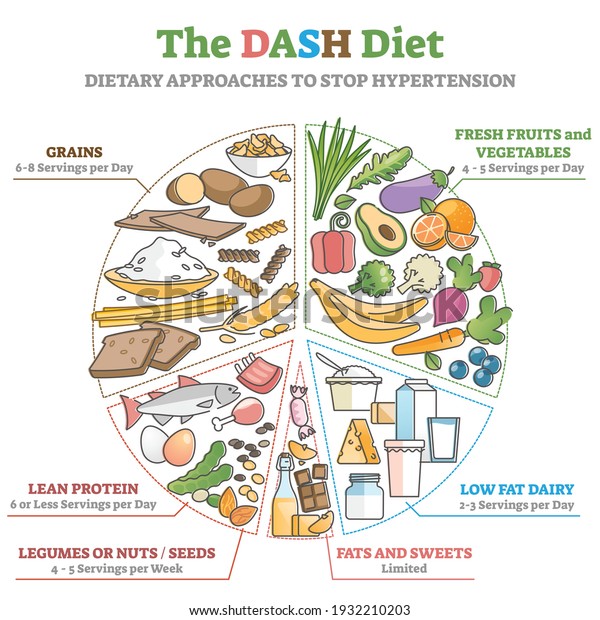
The Dietary Approaches to Stop Hypertension, or DASH diet, focuses on reducing sodium intake to either 2,300 milligrams per day (as recommended by the Dietary Guidelines for Americans) or 1,500 milligrams per day for certain populations. The DASH diet is an evidence-based eating plan that can help reduce high blood pressure. This plan may also decrease the risk of heart attack, stroke, diabetes, osteoporosis, and certain cancers.[3]
DASH tips to lower sodium include:
- Using spices instead of salt to add flavor
- Reading sodium content on processed or canned food labels, and choosing low-sodium options
- Removing some sodium from canned foods (such as beans) by rinsing the product before consumption
- Avoiding salt when cooking
DASH dieters are recommended to consume a variety of whole grains and high-fiber fruits and vegetables, and moderate amounts of low-fat dairy products, lean meats, and heart-healthy fish. In addition, DASH limits the use of saturated fats to less than 7 percent of total calories, and limits the consumption of sweets and alcohol. The DASH diet also calls for consuming less added sugar and drinking fewer sugar-sweetened drinks. It replaces red meat with fish and legumes and calls for increased calcium, magnesium, potassium, and fiber. Also, even though some people on the DASH diet may find it lowers their HDL (good) cholesterol along with their LDL (bad) cholesterol, it still has a positive cumulative effect on heart health.[4]
The Gluten-Free Diet
The gluten-free diet helps people whose bodies cannot tolerate gluten, a protein found in wheat, barley, and rye. One of the most important ways to treat this condition is to avoid problematic foods, which is not easy. Although following a gluten-free diet is challenging, it is prescribed for patients with gluten intolerance and celiac disease, an autoimmune disorder with a genetic link. People who have celiac disease cannot consume gluten products without damaging their intestinal lining. Eating a gluten-free diet means finding replacements for bread, cereal, pasta, and more. 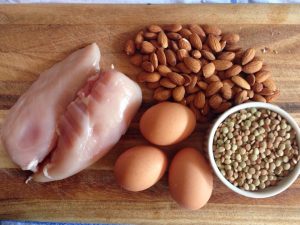
It also means emphasizing fresh fruits, vegetables, and other foods without gluten. However, it is important to note that the gluten-free trend has become something of a fad even for those without a gluten intolerance. Celiac disease is a relatively rare condition found in only 1 percent of the population. Therefore, a gluten-free diet should be followed only with a physician’s recommendation.
Low-Carb Diets
Low-carb diets, which include the Atkins Diet and the South Beach Diet, focus on limiting carbohydrates—such as grains, fruit, and starchy vegetables—to promote weight loss. The theory behind the low-carb diet is that insulin prevents the breakdown of fat by allowing sugar in the form of blood glucose to be used for energy. Proponents of this approach believe that because limiting carbs generally lowers insulin levels, it would then cause the body to burn stored fat instead. They believe this method not only brings about weight loss but also reduces the risk factors for a number of conditions. However, some studies have shown that people who followed certain low-carb diet plans for two years lost an average of nearly 9 pounds, which is similar to the amount of weight lost on higher carbohydrate diets.[5]
The benefits of this kind of diet include an emphasis on whole, unprocessed foods and a de-emphasis of refined carbohydrates, such as white flour, white bread, and white sugar. However, there are a number of downsides. Typically, the first two weeks allow for only 20 grams of carbs per day, which can be dangerously low. In addition, dieters using the low-carb approach tend to consume twice as many saturated fats as people on a diet high in healthy carbohydrates. Low-carb diets are also associated with a higher energy intake, and the notion that “calories don’t count,” which is prevalent in this kind of diet, is not supported by scientific evidence.[6]
The Macrobiotic Diet
The macrobiotic diet is part of a health and wellness regimen based on Eastern philosophy. It combines certain tenets of Zen Buddhism with a vegetarian diet and supports a balance of the oppositional forces of yin and yang. Foods are paired based on their so-called yin or yang characteristics. Yin foods are thought to be sweet, cold, and passive, while yang foods are considered to be salty, hot, and aggressive.
Whole grains make up about 50 percent of the calories consumed and are believed to have the best balance of yin and yang. Raw and cooked vegetables comprise about 30 percent of the diet and include kale, cabbage, collards, bok choy, and broccoli on a daily basis, along with mushrooms and celery a few times a week. Bean or vegetable-based soups and broths can make up 5 to 10 percent of daily caloric intake. Additionally, the diet allows small amounts of fish and seafood several times a week, along with a few servings of nuts. The macrobiotic diet prohibits certain foods, such as chocolate, tropical fruits, and animal products, because they are believed to fall on the far end of the yin-yang spectrum, which would make it difficult to achieve a Zen-like balance.
The macrobiotic diet focuses on foods that are low in saturated fats and high in fiber, which can help to lower the risk of cardiovascular disease. Proponents of this diet also believe that it may protect against cancer. However, many nutritionists and healthcare providers express concerns, particularly if the diet is followed strictly. Extreme macrobiotic eating can be low in protein, low in calories, and pose a risk for starvation. In addition, the diet is also very low in essential vitamins and minerals.[7]
The Mediterranean Diet

The traditional Mediterranean diet incorporates many elements of the dietary choices of people living in Greece and southern Italy. The Mediterranean diet focuses on small portions of nutritionally sound food. This diet features food from plant sources, including vegetables, fruits, whole grains, beans, nuts, seeds, breads and potatoes, and olive oil. It also limits the consumption of processed foods and recommends eating locally grown foods rich in micronutrients and antioxidants. Other aspects of this eating plan include consuming fish and poultry at least twice per week, eating red meat only a few times per month, having up to seven eggs per week, and drinking red wine in moderation. Unlike most diets, the Mediterranean diet does not cut fat consumption across the board. Instead, it incorporates low-fat cheese and dairy products, and it substitutes olive oil, canola oil, and other healthy oils for butter and margarine.
More than fifty years of nutritional and epidemiological research has shown that people who follow the Mediterranean diet have some of the lowest rates of chronic disease and the highest rates of longevity among the populations of the world. Studies have shown that the Mediterranean diet also helps to decrease excess body weight, blood pressure, blood fats, and blood sugar and insulin levels significantly.[8]
Tools for Change
For six years, researchers from the University of Bordeaux in France followed the dietary habits of more than seven thousand individuals age sixty-five and over. Participants who described greater consumption of extra-virgin olive oil reportedly lowered their risk of suffering a stroke by 41 percent. The study controlled for stroke risk factors, such as smoking, alcohol intake, high blood pressure, and a sedentary lifestyle. To increase the amount of olive oil in your diet, try spreading olive oil instead of butter on your toast, making your own salad dressing using olive oil, vinegar or lemon juice, and herbs, cooking with olive oil exclusively, or simply adding a dose of it to your favorite meal.[9]
The Raw Food Diet
The raw food diet is followed by those who avoid cooking as much as possible in order to take advantage of the full nutrient content of foods. The principle behind raw foodism is that plant foods in their natural state are the most wholesome for the body. The raw food diet is not a weight-loss plan, it is a lifestyle choice. People who practice raw foodism eat only uncooked and unprocessed foods, emphasizing whole fruits and vegetables. Staples of the raw food diet include whole grains, beans, dried fruits, seeds and nuts, seaweed, sprouts, and unprocessed produce. As a result, food preparation mostly involves peeling, chopping, blending, straining, and dehydrating fruits and vegetables.
The positive aspects of this eating method include consuming foods that are high in fiber and nutrients, and low in calories and saturated fat. However, the raw food diet offers little in the way of protein, dairy, or fats, which can cause deficiencies of the vitamins A, D, E, and K. In addition, not all foods are healthier uncooked, such as spinach and tomatoes. Also, cooking eliminates potentially harmful microorganisms that can cause foodborne illnesses. Therefore, people who primarily eat raw foods should thoroughly clean all fruit and vegetables before eating them. Poultry and other meats should always be cooked before eating.[10]
Vegetarian and Vegan Diets

Vegetarian and vegan diets have been followed for thousands of years for different reasons, including as part of a spiritual practice, to show respect for living things, for health reasons, or because of environmental concerns. For many people, being a vegetarian is a logical outgrowth of “thinking green.” A meat-based food system requires more energy, land, and water resources than a plant-based food system. This may suggest that the plant-based diet is more sustainable than the average meat-based diet in the U.S.By avoiding animal flesh, vegetarians hope to look after their own health and that of the planet at the same time. Broadly speaking, vegetarians eat beans, grains, and fruits and vegetables, and do not eat red meat, poultry, seafood, or any other animal flesh. Some vegetarians, known as Lacto vegetarians, will eat dairy products. Others, known as Lacto-ovo vegetarians, will eat dairy products and eggs. A vegan diet is the most restrictive vegetarian diet—vegans do not eat dairy, eggs, or other animal products, and some do not eat honey.
Vegetarian diets have a number of benefits. Well-balanced eating plans can lower the risk of a number of chronic conditions, including heart disease, diabetes, and obesity. They also help to promote sustainable agriculture. However, if a vegetarian does not vary his or her food choices, the diet may be insufficient in calcium, iron, omega-3 fatty acids, zinc, and vitamin B12. Also, if people who follow these diets do not plan out their meals, they may gravitate toward foods high in fats.
Table 12.1 The Pros and Cons of Seven Popular Diets
| Diet | Pros | Cons |
| DASH Diet |
|
|
| Gluten-Free Diet |
|
|
| Low-Carb Diet |
|
|
| Macrobiotic Diet |
|
|
| Mediterranean Diet |
|
|
| Raw Food Diet |
|
|
| Vegetarianism and Veganism |
|
|
- Understanding Wellness. University of Illinois at Urbana-Champaign, McKinley Health Center. 2011 The Board of Trustees of the University of Illinois at Urbana-Champaign. https://mckinley.illinois.edu/health-education/wellness. Accessed April 15, 2018. ↵
- Functional Foods. The Academy of Nutrition and Dietetics. https://www.eatright.org/food/nutrition/healthy-eating/functional-foods. Published July 5, 2018. Accessed April 15, 2018. ↵
- DASH Diet Eating Plan. DASH Diet Oregon. http://www.dashdietoregon.org/. Accessed April 12, 2018. ↵
- DASH Diet Eating Plan. DASH Diet Oregon. http://www.dashdietoregon.org/. Accessed April 12, 2018. ↵
- Low-Carb Diet: Can It Help You Lose Weight?.The Mayo Clinic. http://www.mayoclinic.com/health/low-carb-diet/NU00279. Accessed March 6, 2018. ↵
- Steele V. Health and Nutritional Effects of Popular Diets. Kellogg Nutrition Symposium, The Team of Registered Dietitians & Nutrition Professionals at Kellogg Canada Inc. Insert to Canadian Journal of Dietetic Practice and Research 64, no. 3. ↵
- Zelman, KM. Macrobiotic Diet. http://www.webmd.com/diet/features/macrobiotic-diet. Updated February 9, 2018. Accessed April 12, 2018. ↵
- Robinson, K. The Mediterranean Diet. http://www.webmd.com/diet/features/the-mediterranean-diet. Published February 6, 2018. Accessed April 15, 2018. ↵
- More Olive Oil in Diet Could Cut Stroke Risk: Study. MedicineNet.com. https://www.medicinenet.com/script/main/art.asp?articlekey=145823. Published 2011. Accessed April 15,2018. ↵
- Raw Food Diet. WebMD.com.https://www.webmd.com/diet/a-z/raw-foods-diet. Published November 21, 2016. Accessed April 15, 2018. ↵
A food that has health promoting qualities beyond nutritional functions.
 What makes a diet “healthy”? What does the word “healthy” even mean? Each of us might picture something different when we think of a healthy diet, and if you travel around the world, you’ll find even more variation in how people define this term.
What makes a diet “healthy”? What does the word “healthy” even mean? Each of us might picture something different when we think of a healthy diet, and if you travel around the world, you’ll find even more variation in how people define this term.
Indeed, humans are incredibly flexible when it comes to food. We are omnivores, and we can survive and thrive on a wide variety of different foods. The foods that nourish our bodies are often the same foods that nourish our souls, bringing us together with friends and family, celebrating traditions and conjuring memories of meals past.
We’ll begin our study of the nutrients —the substances in food that nourish us—to begin to understand what each gives us. Then, we’ll l consider some tools for choosing foods that will provide us with all the nutrients we need. Because whatever the deep and complex meanings that food brings to our lives and our culture, we also want to choose foods that will promote wellness, fuel our activities, prevent disease, and enable us to long, healthy life.
VIDEO: “A Diet for a Healthy World” By the World Health Organization (June 2020) (I:39 minutes)
Unit Learning Objectives
After completing this unit, you should be able to:
- Be able to define nutrition, food, calories (kcal) and nutrients, and describe how nutrition is related to health, including risk of chronic disease.
- Describe the different factors that impact food choices.
- List the 6 types of nutrients and describe the various ways they are classified.
- Understand how the Dietary Reference Intakes (DRI) are determined, what each type of DRI value means, and how they are used.
- Be able to use the information in a Nutrition Facts label to understand the nutritional qualities of a food.
- Be familiar with several concepts that are helpful in planning a healthful diet, including adequacy, balance, moderation, variety, nutrient density, and empty calories.
- Be familiar with and able to use tools for planning a healthful diet, including MyPlate and the Dietary Guidelines for Americans.
Attribution:
Lane Community College's Nutrition: Science and Everyday Application. Introdution to Unit 1 CC BY-NC 4.0
Image Credits:
Person cooking at a table photo by Markus Winkler on Unsplash (license information)
The state of being in good health, especially as an actively pursued goal
The addition of a nutrient to a food that otherwise does not contain it.
The addition of the original nutrients back into processed foods. Refined grains are stripped of thiamin, niacin, riboflavin, folate, and iron. Enriched grain products have these nutrients added back.
What Foods Provide Carbohydrates?
Looking at the food groups represented in MyPlate below, which food groups do you think contain carbohydrates? If you answered, all of them, you’re correct! One of the goals of this course is to learn more about the different nutrients in foods and to understand the importance of eating a wide variety of foods from the different food groups.

Figure 4.10. Choose MyPlate graphic illustrating the USDA food groups: fruits, vegetables, grains, protein and dairy.
Fruits- Most fruits are sweet, so we know they must contain some type of sugars. In fact, fruits contain a combination of sucrose, glucose, and fructose. They also come packaged with other great nutrients, like Vitamin C and potassium. Whole fruits also contain fiber whereas juices have little to no fiber, even high pulp orange juice are low in fiber. So select whole fruits instead of juice.
Vegetables- Some vegetables are sweet and also contain sugar, although much less than fruits. Similar to fruits, some vegetables (like carrots and green beans) contain small amounts of sucrose, glucose, and fructose. Starchy vegetables (corn, peas, and potatoes, for example) primarily contain starch but some are also sweet and contain sucrose, glucose, and fructose (sweet potatoes and sweet corn, for example). Just like whole fruits, any whole vegetables also contains fiber.
Grains- Grains naturally contain starch and fiber. Sprouted grains also contain maltose. If grains are sweetened with an added sugar, they might contain sucrose, if white cane sugar was used, or fructose and glucose high fructose corn syrup was added.
Dairy- This is the one animal food that contains carbohydrate. Milk and yogurt contain significant amounts of naturally-occurring lactose. Processing reduces much of the lactose in most cheeses. If dairy products (like yogurt and flavored milk ) are sweetened, then it will also contain added sugar.
Protein- Meats do not contain carbohydrate, but many plant foods that fall into the protein group, like beans and nuts, contain starch and fiber.
Fats- Concentrated fats like butter and oil do not contain carbohydrate.
This information is summarized in the Table 4.1.
Table 4.1. USDA food groups with examples of foods and type of carbohydrate in each food group.
|
Food Group |
Examples of Food |
Types of Carbohydrates Present |
|
Fruits |
Apple, orange, banana Orange juice |
Sucrose, glucose, fructose, and fiber Sucrose, glucose, fructose |
|
Vegetables |
Non-starchy veggies Starchy veggies (corn, potatoes, sweet potatoes, peas) |
Sucrose, glucose, fructose, and fiber Starch and fiber, with varying amount of sucrose, glucose, and fructose |
|
Dairy |
Milk, plain yogurt, cheese |
Lactose |
|
Grains |
Wheat, rice, oatmeal, barley Sprouted grains |
Starch and fiber Starch, fiber, and maltose |
|
Protein |
Meat Beans and nuts |
None Starch and fiber |
|
Fats |
Oils, Butter |
None |
Looking at all the foods that contain carbohydrates, you might be able to guess why eliminating carbohydrates from the diet can lead to weight loss. It drastically reduces the variety of food choices, leaving you primarily with low carbohydrate veggies and meats. Not surprisingly, people usually consume less calories when following a "low carb" diet. However, for most people, this is not a sustainable or enjoyable way of eating, and it is hard to consume a nutritionally balanced diet with so many foods off-limits.
Carbohydrate Guidelines for Intake
Total Carbohydrate Intake
The recommended dietary allowance (RDA) for total carbohydrate intake is 130 grams. This is the minimum amount of glucose utilized by the brain, so if you consume less than this, you will probably go into ketosis. In order to meet the body’s high energy demand for glucose, the acceptable macronutrient distribution range (AMDR) for an adult is 45%-65% of total calories. This is about 225 grams to 325 grams of carbohydrate per day if eating a 2,000 Calorie diet. (REMEMBER: 1 gram of carbohydrate contains 4 calories.)
Fiber Intake
The Adequate Intake (AI) for fiber is 14 grams of fiber for every 1,000 calories consumed. This is about 28 grams for an adult female (19-30 years old) and 38 grams for an adult male (19-30 years old). Most people in the United States only get half the amount of fiber they need in a day—about 12 to 18 grams.
Added Sugar Intake
The 2020 Dietary Guidelines recommend that less than 10% of total calories come from added sugars because of its link to obesity and chronic disease. This means those eating a 2,000 calorie diet should limit their added sugar intake to about 12 teaspoons per day. To put that in perspective, a 12 oz, can of soda has about 10 teaspoons of sugar. We will discuss added sugar in more detail later in the unit. Table 4.2 summarizes these recommendations.
Table 4.2 Dietary Recommendations for Carbohydrates
|
|
Recommendations |
|
RDA for Total Carbohydrate |
130 grams |
|
AMDR for Total Carbohydrate |
45% - 65% of total calories |
|
AI for Fiber |
14 grams for every 1,000 calories consumed |
|
Dietary guidelines for added sugar |
Less than 10% of total calories |
Self-Review Questions
Resources:
- U.S. Department of Agriculture and U.S. Department of Health and Human Services. (2020). Dietary Guidelines for Americans, 2020-2025, 9th Edition. Retrieved from https://www.dietaryguidelines.gov/
- Institute of Medicine, Food and Nutrition Board. (2005). Dietary Reference Intakes for Energy, Carbohydrate, Fiber, Fat, Fatty Acids, Cholesterol, Protein, and Amino Acids (Macronutrients). Retrieved from https://www.nap.edu/read/10490/chapter/1
Image Credits:
- Figure 4.8. "ChooseMyPlate Graphic" by The USDA is in the Public Domain
- Table 4.1. "USDA food groups with examples of foods and type of carbohydrate present within each food group" by Tamberly Powell is licensed under CC BY-NC-SA 4.0
- Table 4.2. "Dietary Recommendations for Carbohydrates" by Tamberly Powell is licensed under CC BY-NC-SA 4.0; data from Institute of Medicine, Food and Nutrition Board, 2005. Dietary Reference Intakes for Energy, Carbohydrate, Fiber, Fat, Fatty Acids, Cholesterol, Protein, and Amino Acids (Macronutrients). Washington, DC; The National Academy of Sciences.
What is Nutrition?
Simply put, food is the plants and animals that we eat, and nutrition is how food affects the health of the body. According to the Academy of Nutrition and Dietetics, “Food is essential—it provides vital nutrients for survival, and helps the body function and stay healthy. Food contains macronutrients including protein, carbohydrate and fat that not only offer calories to fuel the body and give it energy but play specific roles in maintaining health. Food also supplies micronutrients (vitamins and minerals) and phytochemicals that don't provide calories but serve a variety of critical functions to ensure the body operates optimally.” [1] (Phytochemicals are substances in plants that give them their smell, taste, and color, as noted in the image below. [2] They are not technically nutrients, but many have been shown to affect human health.

The study of nutrition goes beyond just a discussion of food and the nutrients needed by the body. It includes how those nutrients are digested, absorbed, and used by the cells of the body. It examines how food provides energy for daily activities and how our food intake and choices impact body weight and risk for chronic diseases such as heart disease and type 2 diabetes. It also provides insight on behavioral, social, and environmental factors that influence what, how, when, and why we eat. [3] Thus, nutrition is an important part of the overall discussion of health and wellness.
How Nutrition Affects Health
The World Health Organization (WHO) defines health as “a state of complete physical, mental and social well-being and not merely the absence of disease or infirmity.”[4] The WHO recognizes nutrition as a critical part of health and development, noting that better nutrition is related to:[5]
- improved infant, child and maternal health
- stronger immune systems
- safer pregnancy and childbirth
- lower risk of non-communicable diseases (such as type 2 diabetes and cardiovascular disease)
- greater longevity
- greater productivity, creating opportunities to break cycles of poverty and hunger
Malnutrition, including both undernutrition and overnutrition, is a significant threat to human health. In fact, nutrition is associated with four of the top ten leading causes of death in the United States, including heart disease, cancer, diabetes, and stroke.[6]
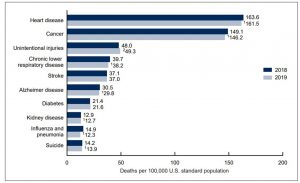
Nutrition can affect the health of the mind as well as the body. For example, some research suggests that the foods people eat can influence their mood. A 2019 study of moderately-depressed people aged 17 to 35 years old found that when half of them shifted towards a Mediterranean-style eating pattern for 3 weeks—emphasizing more fruits and vegetables, whole grains, lean protein sources, unsweetened dairy, fish, nuts and seeds, olive oil, and spices—their depression levels decreased compared to participants who continued their usual eating habits.
 Some (but not all) other studies have also found links between healthier diets and decreased risk of depression. It’s not clear why this might be, but researchers speculate that decreased inflammation or changes in the body’s microbiome caused by these dietary patterns may play a role in brain functioning and mental health. [7] This is an area that requires much more research, but as you’re thinking about dietary choices, it’s worth thinking about how foods make you feel.
Some (but not all) other studies have also found links between healthier diets and decreased risk of depression. It’s not clear why this might be, but researchers speculate that decreased inflammation or changes in the body’s microbiome caused by these dietary patterns may play a role in brain functioning and mental health. [7] This is an area that requires much more research, but as you’re thinking about dietary choices, it’s worth thinking about how foods make you feel.
In addition to nutrition,health is affected by genetics, the environment, life cycle, and lifestyle. One important facet of lifestyle is personal dietary habits that includes what a person eats, how much a person eats during a meal, how frequently meals are consumed, and how often a person eats out. Other aspects of lifestyle include physical activity level, recreational drug use, and sleeping patterns, all of which play a role in health and influence food choices and nutrition status. Following a healthy lifestyle improves your overall health and well-being.
VIDEO: “How the Food You Eat Affects Your Brain" By Mia Nacamulli TED ED (June 2016), 3:46 minutes.
Factors that Affect Food Choices
Both the environment and lifestyle influence the foods you choose to eat. Food itself can regulate your appetite and how you feel. High-fiber foods and those high in protein decrease appetite by slowing the digestive process and prolonging the feeling of being full (also called satiety). Making food choices that maximize nutrient intake and satiety can help manage how much you eat and how long before you eat again. Apps. such as the BAM!! Dining Decision App, are designed to help you make healthy choices.
BAM! Dining Decision ApP
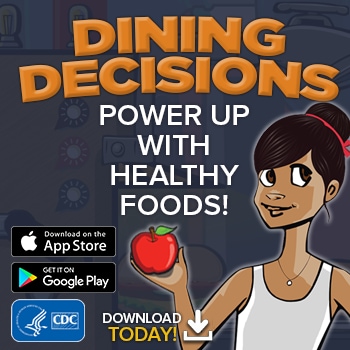
VIDEO: "Why 1.5 Billion People Eat with Chopsticks" By Jennifer 8 Lee (January 21, 2020) 3:26 minutes.
https://www.youtube.com/watch?v=tSciinXdGhI
A number of other factors affect the dietary choices individuals make, including:
- Taste, texture, and appearance. Individuals have a wide range of taste preferences, which influence their food choices. For example, some people dislike milk and others hate raw vegetables. Foods that may be unappealing at first to some people, like vegetables or tofu, can often be adapted to meet most taste preferences, and people can learn to like foods over time with repeated exposures.
- Economics. Access to fresh fruits and vegetables may be limited, particularly for those who live in economically disadvantaged or remote areas, where affordable food options are limited to convenience stores and fast food.
- Early food experiences. People who were not exposed to different foods as children, or who were forced to swallow every last bite of overcooked vegetables, may have limited food choices or experience food aversions as adults. On the other hand, those exposed to a variety of foods in the setting of pleasant family meals, are more likely to maintain those same eating habits in adulthood.
- Habits. It’s common to establish eating routines, which can work both for and against optimal health. Habitually grabbing a fast-food sandwich for breakfast can seem convenient, but might not offer substantial nutrition. Yet getting in the habit of drinking an ample amount of water each day can yield multiple benefits.
- Culture. The culture in which one grows up affects how one sees food in daily life and on special occasions.
- Geography. Where a person lives influences food choices. For instance, people who live in Midwestern US states have less access to seafood than those living along the coasts.
- Advertising. The media greatly influences food choices by persuading consumers to eat certain foods.
- Social factors. Any school lunchroom observer can testify to the impact of peer pressure on eating habits, and this influence lasts through adulthood. People make food choices based on how they see others and want others to see them. For example, individuals who are surrounded by others who consume fast food are more likely to do the same.
- Health concerns. Some people have food allergies or intolerances and need to avoid certain foods. Others may have developed health issues that require them to follow a low salt diet. In addition, people who have never worried about their weight have a very different approach to eating than those who have long struggled to change their weight.
- Emotions. There is a wide range in how emotional issues affect eating habits. Food can be a source of comfort, such as the taste of a favorite dish from childhood. Or, for people with a history of disordered eating, it may also be a source of anxiety. When faced with a great deal of stress, some people tend to overeat, while others find it hard to eat at all.ice
-

Sustainable Food Choices Green food/sustainability choices Based on a growing understanding of diet as a public and personal issue, more and more people are starting to make food choices based on their environmental impact. Realizing that their food choices help shape the world, many individuals are opting for a vegetarian diet, or, if they do eat animal products, striving to consider animal welfare and sustainability in their choices. Purchasing local and organic food products and items grown through sustainable products can help to shrink the environmental impact of one’s food choices.
Discussion Starters
- How might the way we nourish our bodies affect the health of our planet?
- Debate your classmates: Should a nation's government try to influence what foods people of the nation eat?
- Consider the top three foods you eat and explain why you eat these items most frequently.
Self-Review Questions
Attributions:
- Lane Community College's Nutrition: Science and Everyday Application "Nutrition and Health " CC BY-NC 4.0
References:
- 1Academy of Nutrition and Dietetics. (2019). How to Explain Basic Nutrition Concepts. Retrieved December 18, 2019, from https://www.eatrightpro.org/practice/practice-resources/international-nutrition-pilot-project/how-to-explain-basic-nutrition-concepts
- 2Medline Plus. (2019). Definitions of Health Terms. Retrieved from https://medlineplus.gov/definitions/nutritiondefinitions.html
- 3World Health Organization. (n.d.) Constitution. Retrieved from https://www.who.int/about/who-we-are/constitution
- 4World Health Organization. (2018, February 22). Nutrition. Retrieved from https://www.who.int/news-room/facts-in-pictures/detail/nutrition
- 5Centers for Disease Control and Prevention. (2017, March 17). Leading Causes of Death. Retrieved from https://www.cdc.gov/nchs/fastats/leading-causes-of-death.htm
- 6Aubrey, A. & Chatterjee, R. (2019, October 19). Changing Your Diet Can Help Tamp Down Depression, Boost Mood. Retrieved from https://www.npr.org/sections/thesalt/2019/10/09/768665411/changing-your-diet-can-help-tamp-down-depression-boost-mood
Image Credits:
- Macroshot of vegetables photo by Dan Gold on Unsplash (license information)
- Figure 1.1. "Leading Causes of Death in the U.S." by Centers for Disease Control and Prevention is in the Public Domain
- Best friends photo by Thought Catalog on Unsplash (license information)
- Family meal photo by National Cancer Institute on Unsplash (license information)

